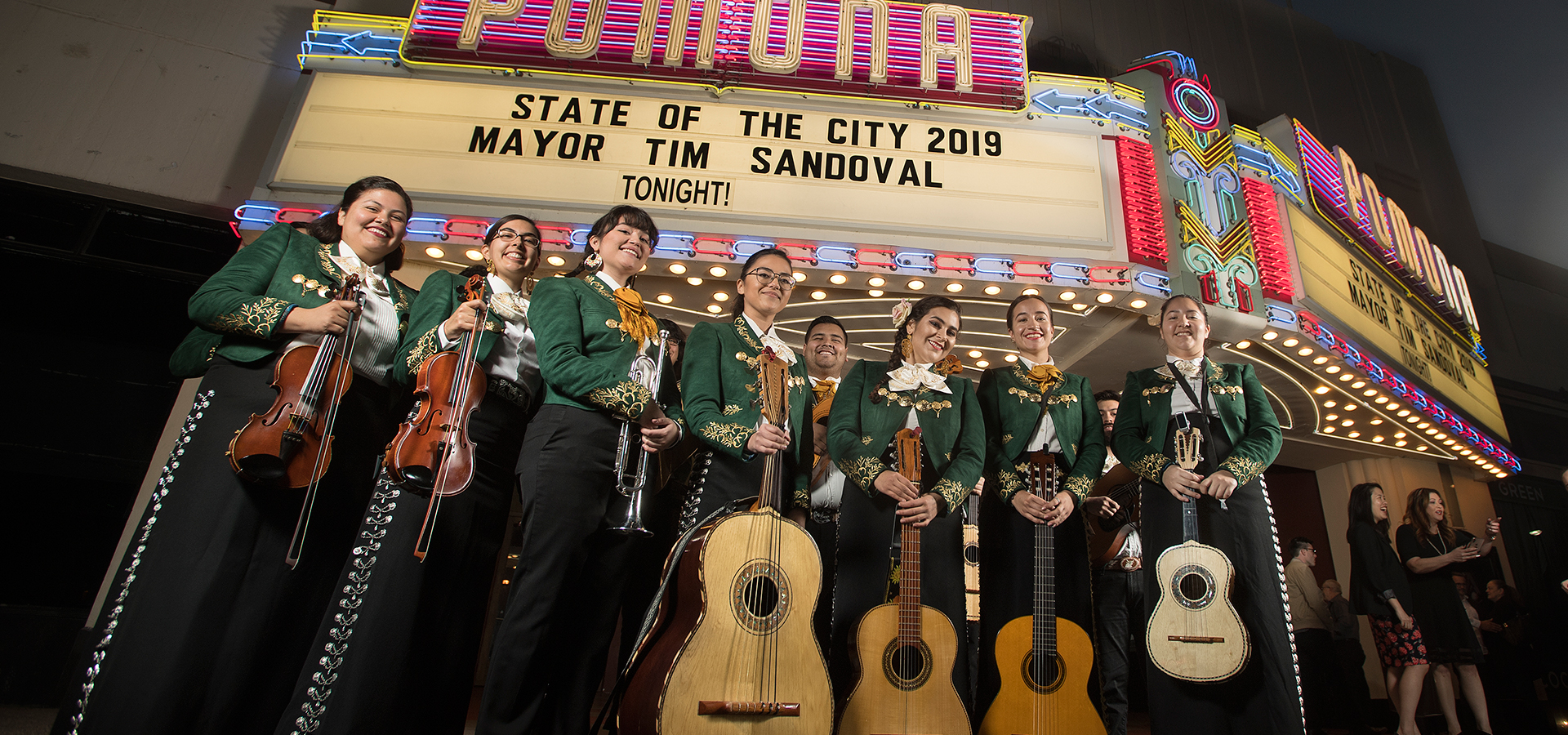On a Cultural Note
Mariachi Strikes a Chord with a Diversity of Students
By Melanie Johnson
Before joining Cal Poly Pomona’s mariachi ensemble, Charisse Talaro’s exposure to the music genre was limited to a few bands that played at parties at her friends’ homes.
Talaro, who is Filipina, didn’t have a cultural connection to mariachi, but growing up in Los Angeles with Hispanic friends, she did have an appreciation for it.
“I always thought it was really cool,” says the guitarist.
With memories of those backyard parties, Talaro decided to audition for the campus’ Mariachi Los Broncos during her freshman year.
“It was really just out of curiosity,” she says.
Performing in the mariachi ensemble has brought her out of her shell, says Talaro, who describes herself as fairly shy. For example, she has gone so far as to sing a couple of solos.
“What I’ve enjoyed about it is not only the friendships I’ve made, but it has expanded my music library,” says the music industry studies senior. “You don’t have to understand the lyrics. You can still feel the emotion the music is trying to convey.”
Ethnomusicology Professor Jessie Vallejo launched Mariachi Los Broncos in 2016 with 15 students. Three years later, there is a second group for beginning- and intermediate-level students dubbed Mariachi Los Caballeros (knights).
In all, the ensembles have around 40 participants. A total of 77 students have gone through the program, with a near-even split of 53 percent majoring in music and 47 percent studying other fields.
“What makes us special is that Cal Poly Pomona is one of two universities in California that has a full-time professional dedicated to the ensemble,” Vallejo says. “Everywhere else, it’s a student club or a class taught by part-time faculty. This shows a different level of commitment.”
"You don't have to understand the lyrics. You can still feel the emotion the music is trying to convey. Music is a universal language."
- Charisse Talaro, music student
Mariela Gomez, a junior studying music education, says she met Vallejo after auditioning for a music scholarship at Cal Poly Pomona. Gomez, who is Mexican American, says she was familiar with mariachi but she had never played it. The trumpet player had to adapt to mariachi’s improvisational style.
“It was very different because I’ve been classically trained,” she says. “You give me the music, and I learn what’s on the page. Mariachi is not like that. You have to make sure you come in on time after the singer’s notes and sometimes we add to it. That’s the hardest part.” Mariachi has a wide appeal because the genre is played in different countries and cultures, Gomez says.
“I’ve learned that mariachi is very expressive, very proud,” she says. “I think it connects with people from different backgrounds because there are many countries that interpret different forms of mariachi like Cuba, Mexico and Guatemala.”
(Photo caption: The Mariachi Los Broncos ensemble performs at Pomona Mayor Tim Sandoval’s State of the City address at the Fox Theater in downtown.)

Diverse and Multi-Disciplinary Perspectives
We value diversity, diverse perspectives and inclusivity, all of which are integral to multi-disciplinary and collaborative teaching, learning, discovery and innovation.
